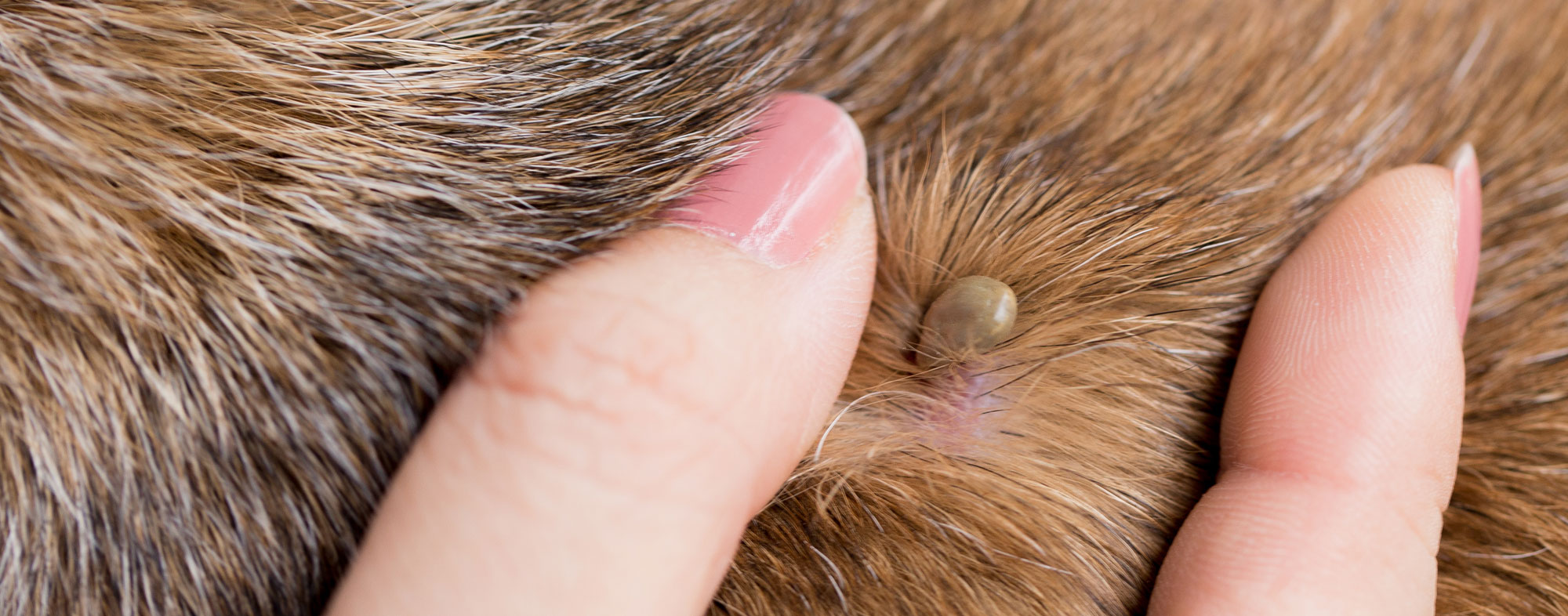Find out How Do You Know If Your Dog Has Lyme Disease? You can tell if your dog has Lyme disease by watching for symptoms like lameness and fever. Other signs include lack of appetite and swollen joints.
Lyme disease is a bacterial infection transmitted by ticks, causing discomfort and potentially serious health issues for dogs. Knowing the symptoms and seeking prompt veterinary care is crucial for proper diagnosis and treatment. Regular tick prevention measures and thorough inspections after outdoor activities can help prevent Lyme disease in dogs.
Understanding the risks and being proactive in protecting your furry friend can make a significant difference in their overall well-being.
Introduction To Lyme Disease In Dogs
Lyme disease in dogs can manifest as lethargy, joint pain, and fever. Watch for symptoms like lameness and swollen lymph nodes. Regular vet check-ups are crucial for early detection and treatment.
Lyme disease in dogs is a common tick-borne illness caused by the bacterium Borrelia burgdorferi. It is transmitted through the bite of an infected deer tick, also known as the black-legged tick, which is prevalent in wooded or grassy areas. As a responsible pet owner, it’s crucial to understand the transmission, prevalence, and risks to your dog’s health associated with Lyme disease.
Transmission And Prevalence
The primary mode of transmission of Lyme disease in dogs is through the bite of an infected tick. Ticks become infected after feeding on small mammals or birds carrying the bacteria. When an infected tick bites a dog, it can transmit the bacteria, leading to Lyme disease. The prevalence of Lyme disease varies by geographical location, with higher rates in regions where ticks are abundant, such as the Northeastern, Mid-Atlantic, and Upper Midwest regions of the United States.
Risks To Canine Health
When left untreated, Lyme disease can pose risks to a dog’s health, including joint pain, lameness, and in severe cases, kidney damage. Dogs that spend time outdoors in wooded or grassy areas are at a higher risk of contracting Lyme disease. It is important to be vigilant about tick prevention and regularly check your dog for ticks, especially during the warmer months when ticks are most active.

Credit: www.hartz.com
Early Symptoms Of Lyme Disease
Lyme disease is a prevalent tick-borne illness that affects both humans and dogs. It is crucial to be aware of the early symptoms of Lyme disease in dogs so that prompt treatment can be sought. Recognizing the signs early can prevent the disease from progressing into a more severe and debilitating condition.
Fever And Lethargy
Dogs with Lyme disease may exhibit symptoms such as fever and lethargy. A sudden or unexplained fever, coupled with a lack of energy and enthusiasm, could indicate the presence of Lyme disease. It is important to monitor your dog’s body temperature and behaviour, especially after outdoor activities, and seek veterinary attention if you notice any unusual changes.
Joint Pain And Lameness
Joint pain and lameness are common early indicators of Lyme disease in dogs. If your dog shows signs of limping or difficulty in moving, especially in the joints, it could be a cause for concern. Lameness may seem to shift from one leg to another and can be intermittent. Observing any unusual gait or reluctance to engage in physical activities should prompt a visit to the veterinarian for a thorough examination.
Physical Signs To Watch For
When it comes to Lyme disease in dogs, being vigilant for physical signs is crucial. Knowing what to look for can help catch the disease early.
Swollen Lymph Nodes
Detecting swollen lymph nodes in your dog is a key indicator of potential Lyme disease. Feel around the neck, shoulders, and back legs for any abnormal swelling.
Changes In Appetite And Behavior
Keep an eye out for changes in your dog’s appetite and behaviour. Loss of appetite or sudden shifts in behaviour can signal an underlying issue.

Credit: beyondpets.com
The Bullseye Rash: A Telltale Sign?
When it comes to Lyme disease in dogs, one potential indicator is the presence of a bullseye rash. This distinctive mark can be a telltale sign that your furry friend has been infected with the bacteria-carrying tick responsible for Lyme disease. Understanding the appearance and rarity of this rash in dogs can help pet owners identify and address potential cases of the disease.
Appearance And Location
The bullseye rash associated with Lyme disease typically appears as a red ring surrounding a clear area and often resembles a target or bullseye. The rash may develop at the site of the tick bite, making it crucial to regularly check your dog for any unusual marks, especially during tick season. Common locations for the rash include the ears, groin, or armpits, but it can also manifest in other areas of the body.
Rarity In Dogs
While the bullseye rash is a well-known symptom of Lyme disease in humans, it is much less common in dogs. Dogs infected with Lyme disease may not exhibit this distinctive rash, making it important for pet owners to remain vigilant for other potential signs of the illness. Regular tick checks, especially after spending time outdoors, can help detect any ticks before they have the chance to transmit the Lyme disease-causing bacteria to your dog.
Diagnostic Tests For Lyme Disease
Lyme disease is a serious condition that can affect dogs, and early detection is crucial for successful treatment. Diagnostic tests for Lyme disease play a vital role in identifying the presence of the disease and determining the appropriate course of action.
Blood Tests And Serology
Blood tests are commonly used to diagnose Lyme disease in dogs. These tests can detect the presence of antibodies produced by the dog’s immune system in response to the Lyme disease-causing bacteria. Serology tests, including the enzyme-linked immunosorbent assay (ELISA) and the Western blot test, are often performed to confirm the diagnosis and assess the severity of the infection.
Urine Analysis And Organ Function Tests
Urine analysis can provide valuable insights into the presence of Lyme disease in dogs. The presence of protein and blood in the urine may indicate kidney damage, which can occur as a result of Lyme disease. Organ function tests, such as liver enzyme tests and kidney function tests, are essential for evaluating the impact of Lyme disease on the dog’s overall health and identifying any potential complications.
Treatment Options Available
To determine if your dog has Lyme disease, watch for symptoms like fever, lameness, and loss of appetite. Treatment options include antibiotics and supportive care, so consult your veterinarian for proper diagnosis and management. Early detection is key to a successful recovery for your furry companion.
Lyme disease in dogs can be treated effectively with appropriate care.
Antibiotic Therapy
Antibiotics like doxycycline are commonly used for treating Lyme disease in dogs.
Supportive Care And Pain Management
Supportive care focuses on alleviating symptoms and providing comfort to the dog.
Consider non-steroidal anti-inflammatory drugs (NSAIDs) for pain relief.
Use warm compresses to ease joint stiffness and discomfort.
Provide a comfortable, quiet resting area for recovery.
Prevention Strategies
Tick Prevention Methods
Tick prevention is crucial in minimizing the risk of Lyme disease in dogs. Regularly check your dog for ticks after outdoor activities, especially in wooded or grassy areas. Use tick preventatives recommended by your veterinarian, such as topical treatments or oral medications. Additionally, consider using tick collars to provide extra protection against these disease-carrying pests.
Vaccination And Regular Vet Visits
Vaccination is an essential tool in the prevention of Lyme disease. Consult your veterinarian about the Lyme disease vaccine, which can help protect your dog from the infection. Furthermore, regular veterinary visits are crucial for early detection and treatment of Lyme disease. Your vet can guide preventative measures and check for any signs of tick-borne illnesses during routine examinations.
Long-term Management And Monitoring
Once a dog has been diagnosed with Lyme disease, long-term management and monitoring become crucial. This includes a combination of diet and exercise, as well as ongoing medical care to ensure the dog’s well-being.
Diet And Exercise
Diet and exercise play a vital role in the long-term management of Lyme disease in dogs. A well-balanced diet, rich in essential nutrients, can help boost the dog’s immune system and aid in their overall recovery. Regular exercise, tailored to the dog’s abilities, can also promote better circulation and maintain muscle strength.
Ongoing Medical Care
Ongoing medical care is essential for dogs with Lyme disease. This includes regular check-ups with the veterinarian, monitoring for any signs of disease progression, and adjustments to the treatment plan as needed. Additionally, preventive measures such as tick control and vaccinations should be diligently maintained to minimize the risk of re-infection.
Understanding The Risk Of Chronic Lyme Disease
Chronic Lyme Disease poses a significant risk to dogs, leading to long-term health complications. Understanding these risks is crucial for pet owners to ensure early detection and effective management.
Symptoms Of Chronic Lyme
- Persistent lameness and joint swelling
- Fatigue and lethargy
- Fever and loss of appetite
- Neurological issues such as seizures
Managing Long-term Health Complications
- Regular veterinary check-ups for monitoring
- Timely administration of antibiotics
- Supportive care to alleviate symptoms

Credit: www.youtube.com
Conclusion: Staying Vigilant Against Lyme Disease
To stay vigilant against Lyme disease in dogs, it is important to be aware of the symptoms, which include lethargy, joint pain, and fever. Regular tick checks and preventative measures such as tick-repellent medication can also help reduce the risk of infection.
Summary Of Key Points
In conclusion, Lyme disease is a serious illness that can be difficult to diagnose. It is important to know the symptoms and keep an eye on your dog’s behaviour. Remember that prevention is the best course of action, so make sure your dog is protected against ticks with regular treatments. If you suspect your dog has contracted Lyme disease, seek medical attention immediately.
Encouragement For Proactive Care
As a responsible pet owner, it is up to you to take proactive measures to keep your dog healthy and safe. Regular vet checkups and preventative treatments are essential to help prevent the spread of Lyme disease. Be sure to check your dog for ticks after spending time outdoors, and be vigilant about any changes in behaviour or symptoms. With proper care and attention, you can help keep your furry friend happy and healthy for years to come.
Lyme disease can be a serious and debilitating condition for dogs, but with proper care and attention, it can be prevented and treated. By knowing the symptoms and taking proactive measures to protect your pet, you can help keep them safe and healthy. Remember to keep an eye out for any changes in behaviour or symptoms and seek medical attention if you suspect your dog has contracted Lyme disease. With a little bit of effort and care, you can help ensure your furry friend lives a long and healthy life.
Frequently Asked Questions
How Do You Know If Your Dog Has Lyme Disease?
You can tell if your dog has Lyme disease by watching for symptoms like lameness and fever. Other signs include lack of appetite and swollen joints.
How Do You Detect Lyme Disease In Dogs?
To detect Lyme disease in dogs, observe for symptoms like lethargy, fever, lameness, and swollen joints. Blood tests can confirm the presence of the disease.
Can Lyme Disease In Dogs Be Cured?
Yes, Lyme disease in dogs can be cured with antibiotics and proper veterinary care. Early detection and treatment are crucial for successful recovery. Regular check-ups and preventive measures can help protect your dog from Lyme disease.
Will My Dog Be OK If He Has Lyme Disease?
Yes, with early detection and treatment, most dogs can recover from Lyme disease. It’s important to consult a vet for proper care.
How Long After A Tick Bite Does A Dog Get Lyme Disease?
Lyme disease in dogs can develop 24 to 48 hours after a tick bite. Keep an eye out for symptoms.
Conclusion
Lyme disease is a serious condition that can affect your furry friend. It is important to stay vigilant and look out for symptoms such as fever, lethargy, and joint pain. If you suspect your dog may have Lyme disease, it is crucial to seek veterinary care immediately.
Prevention is key, so make sure to keep your dog protected from tick bites with tick-preventative medication and regular tick checks. By being proactive, you can help keep your dog healthy and happy for years to come.

Hello I am Farhana I have been doing research on dogs since last 10 years. I have been doing research on dog special parts or dog food since last 10 years. I have gained knowledge about my dog in these ten years so. I want to blog about it daily.

